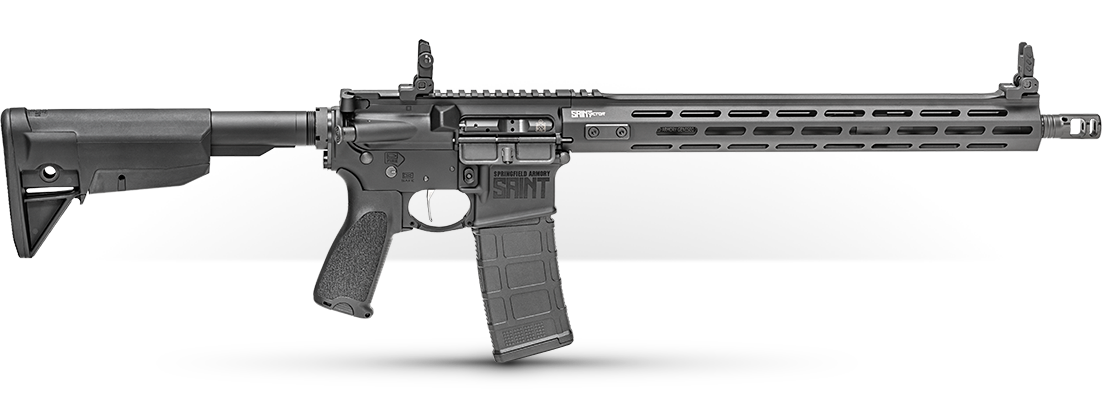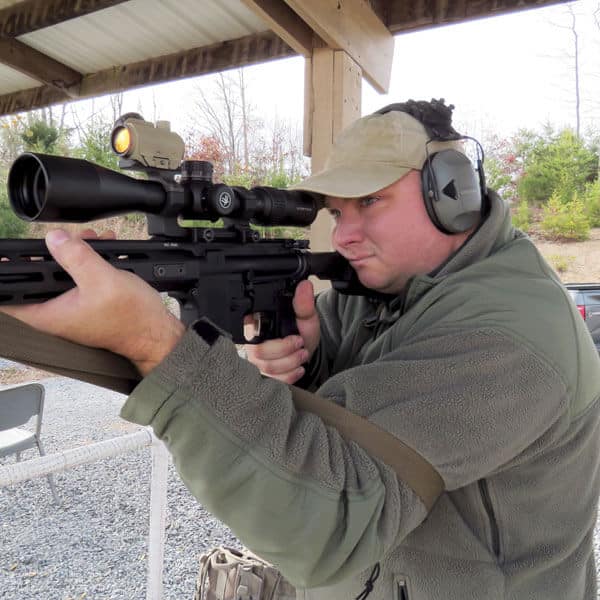How to Set Up and Use an AR Sling
August 18th, 2023
6 minute read
I feel that a sling is one of those must-have accessories for a rifle, and there is no shortage of options out there. However, it seems that in recent years, the focus of the sling has been as a rapidly adjustable carrying strap and less on using it as a potential shooting aid.
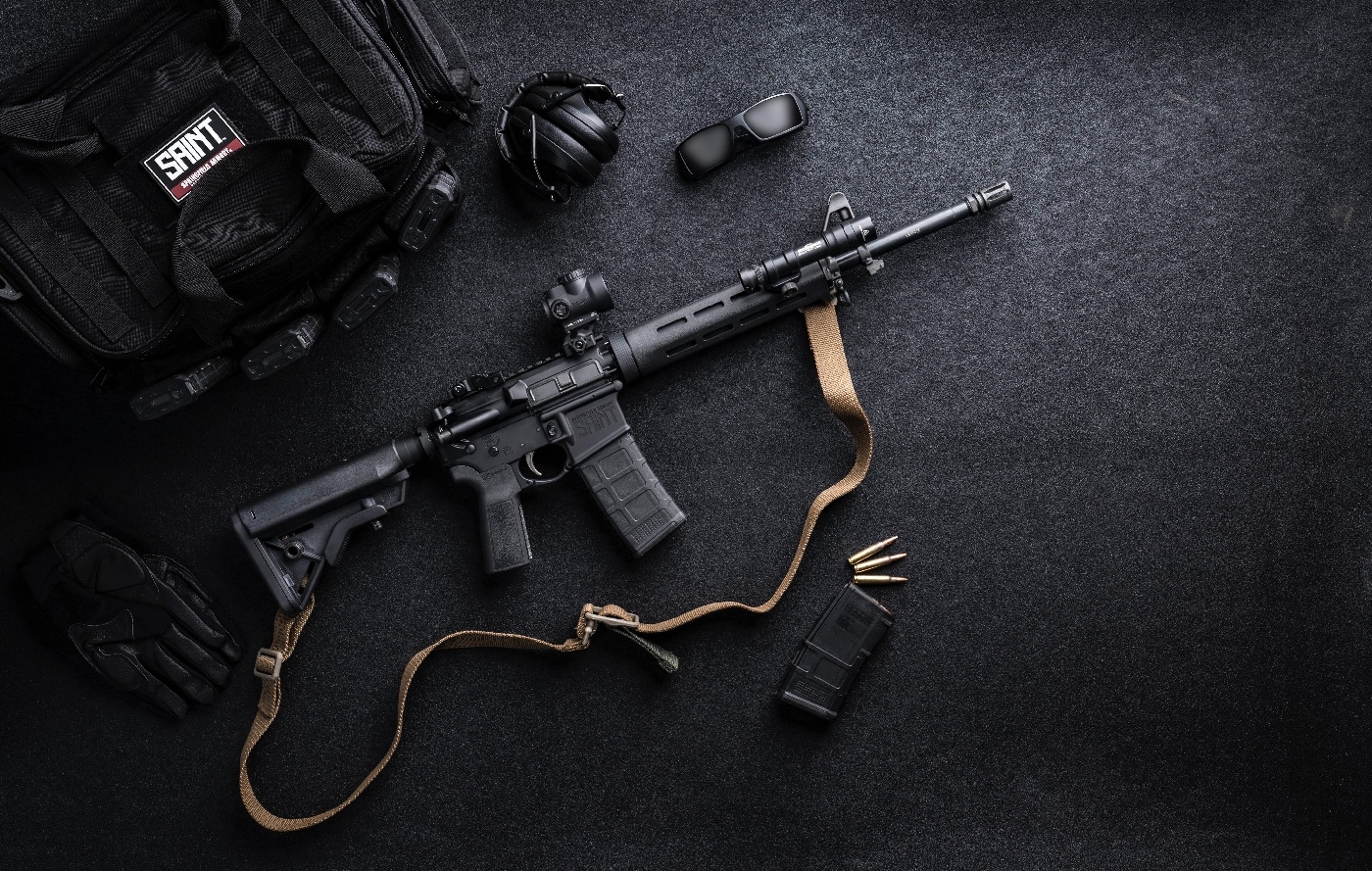
My goal for this article is to introduce some techniques that can be used with a modern two-point sling to help make the AR-15 more stable in certain situations. I’m not reviewing any particular two-point sling or advocating one brand over another; the premise is that you already have one, and we’re just maximizing its potential.
[For additional information on the Springfield Armory line of SAINT AR-style rifles, click here.]
Sling Set-Up
I can’t tell you exactly how you should set up a sling on your rifle, but I can show you how I’ve set one up on my SAINT Victor, and why. This rifle is used chiefly for local carbine competitions, so I’m not running anything beyond just what I need on the gun.
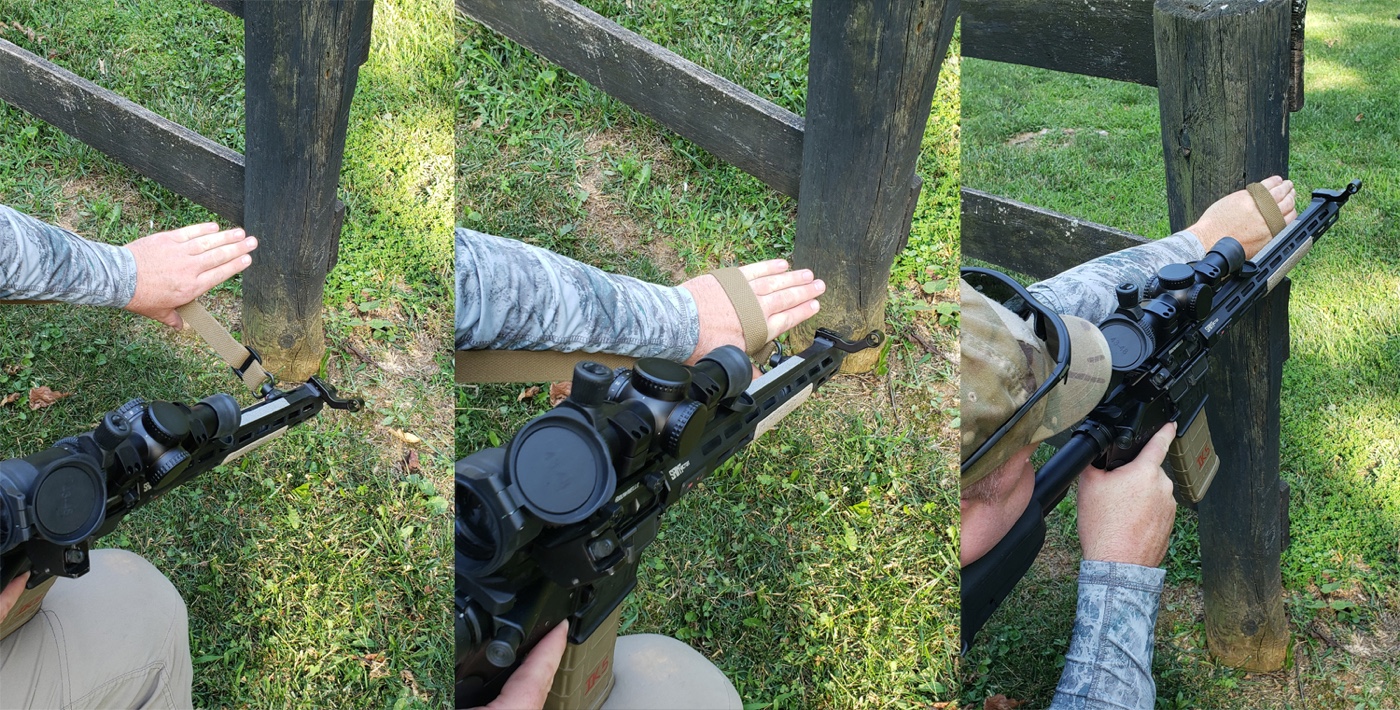
That being the case, I’ve attached the front of my sling close to the end of the handguard and the rear is attached on the outboard side of the stock. Mounting the sling this way keeps it more stable when the rifle is hanging and is more useful for support when using some of the techniques below.
Always be mindful of what accessories you have attached to the rifle and where your hand placement is on the handguard because that can influence where the sling gets attached. My sling length is adjusted such that with it cinched up, I can just get the rifle into the pocket of my shoulder, and all the way loose, I can easily transition to my support side.
Positional Shooting with the Sling
When I’m using the sling, I aim to isolate as many muscles as possible using bone support while establishing a good natural point of aim that keeps my “wobble zone” within the target.
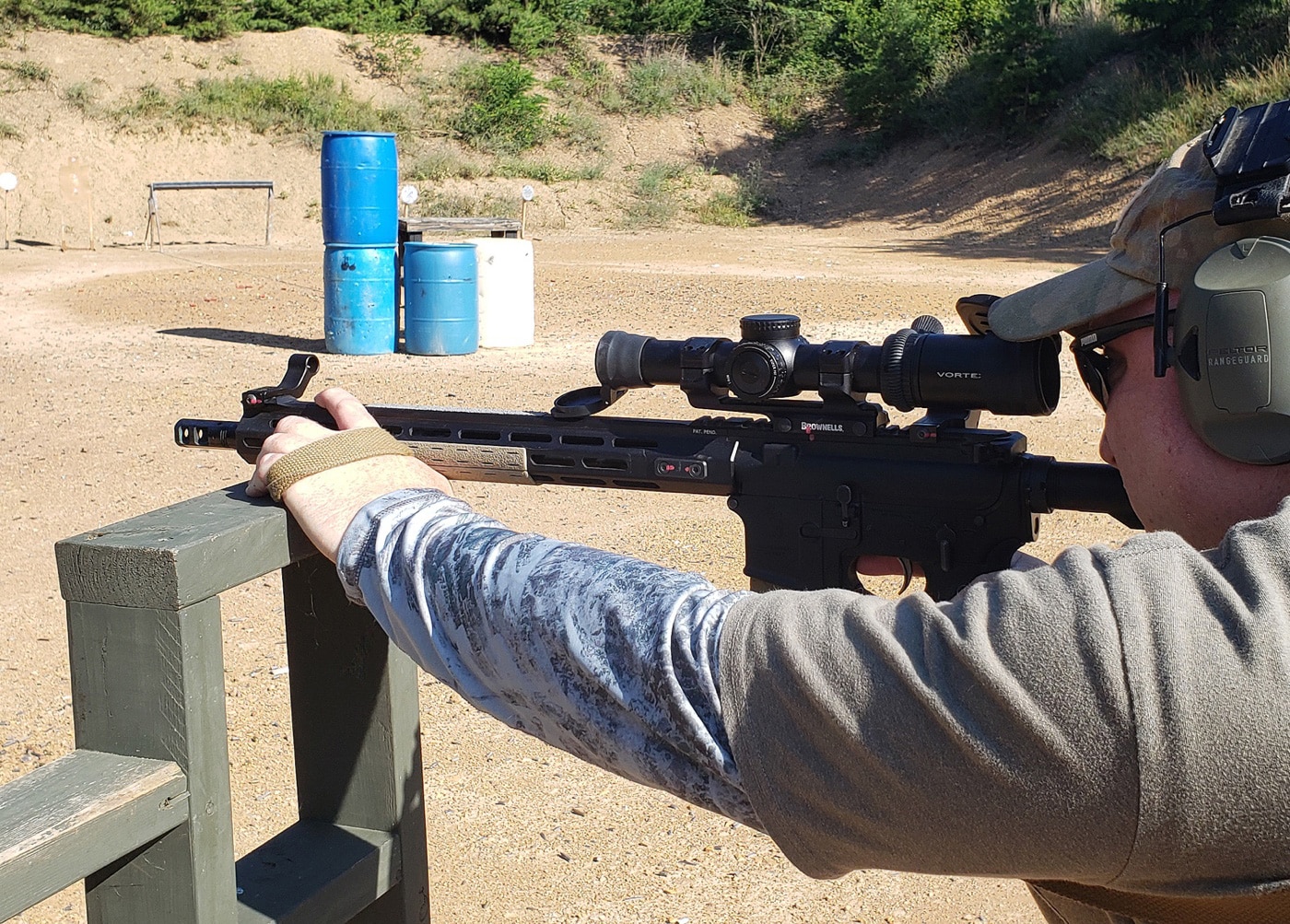
Will I utilize the sling in every situation? Absolutely not. Whether or not I use the sling is dictated by three things: distance, target size, and speed. If I have a big target that’s pretty close, I’m not going to use the sling because I can probably keep my wobble zone on target and engage it quickly.
On the other hand, a more distant or smaller target could warrant using a sling in order to help keep my wobble zone on target.
Offhand Shooting
Standing offhand shots are unstable by nature; I’m activating many muscles to support myself and the rifle, so if I don’t break a shot quickly, my wobble zone will be all over the place. If I need to take an accurate shot, I’ll try to brace off something and use the sling’s tension for support.
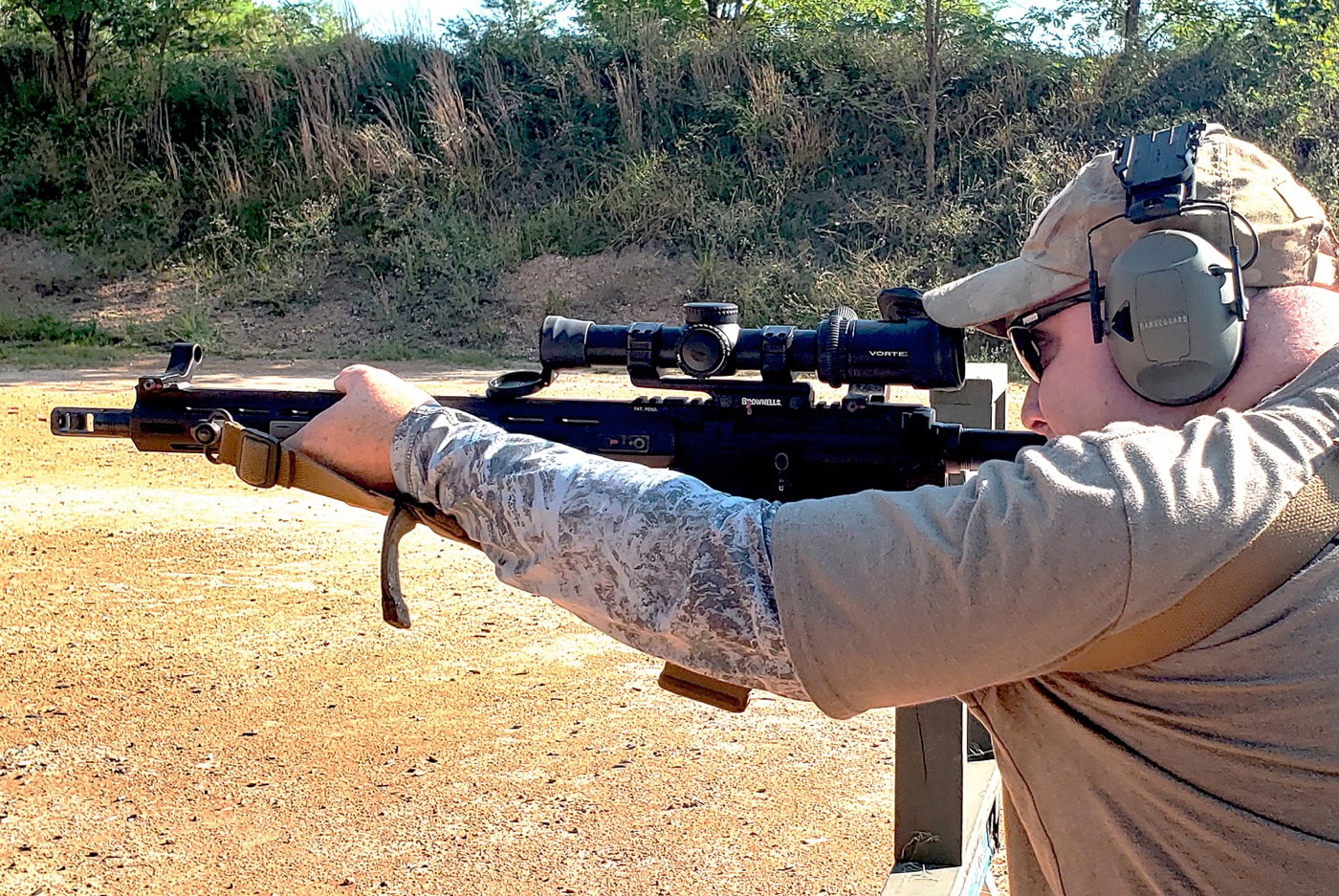
If there’s a post, barricade, or window/door frame, I can wrap the sling around my support side hand and push the palm of my hand into the object, pinching the handguard in a c-clamp. Locking my legs out and leaning forward slightly further helps me “lock in” when I’m ready to take the shot. This technique doesn’t require anything fancy, and it’s easy to get in and out of in a hurry.
If I have nothing around me and I need to take an offhand shot, simply cinching the sling all the way down and bringing the rifle up can be enough for a steady shot.
Kneeling Positions
Kneeling is a core position that I feel every marksman should be proficient at. Starting from a patrol carry, all I need to do is cinch the sling all the way down, pass my hand between the sling and handguard, and start to drop down. I want my support-side knee up and my elbow forward of that knee to give me that good bone support.
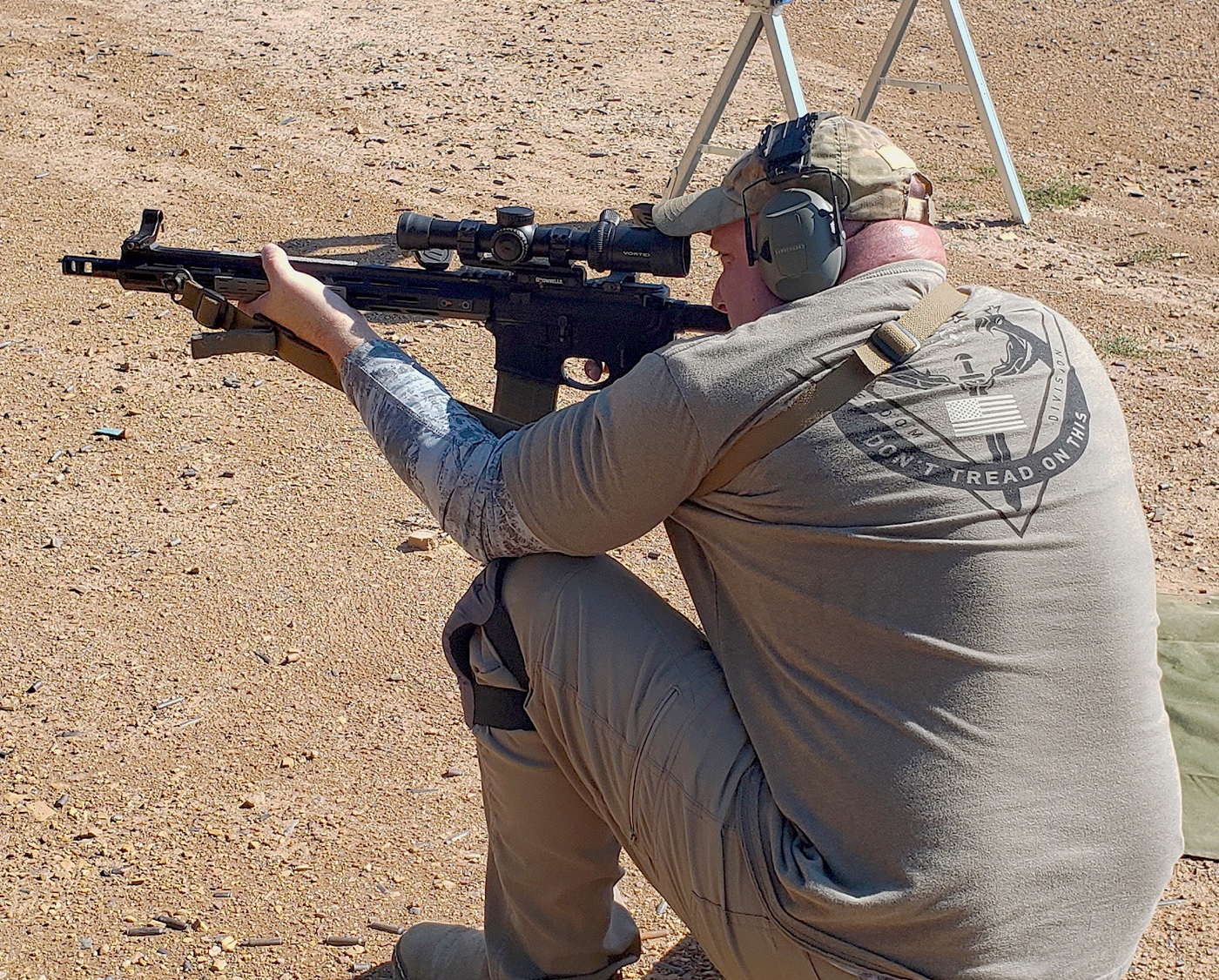
If I can get into a position where I can also brace off of something, that will make me that much more stable. I will pop that sling out to tighten it, bring my strong-side knee up this time to support my elbow, and use a c-clamp grip to hold the forend.
The sling is routed under my forearm so I can pull my arm in to put more tension on the sling and lock in before I take a shot.
Prone Positions
There are multiple variations on the prone, but primarily when I drop down, I’m straight behind the rifle, legs spread shoulder-width apart, and feet flat on the ground. I use the 30-round magazine as a monopod which, despite internet claims, won’t cause malfunctions.
I cinch the sling down until I can feel the gun pull back into me and grasp the forend near the barrel nut in a “thumb under” c-clamp grip. This technique gets my elbows out to make a nice, wide footprint for stability and does a good job of managing recoil.
Using this technique and match-grade ammo, I’ve easily made easy hits on targets out to 600 yards.
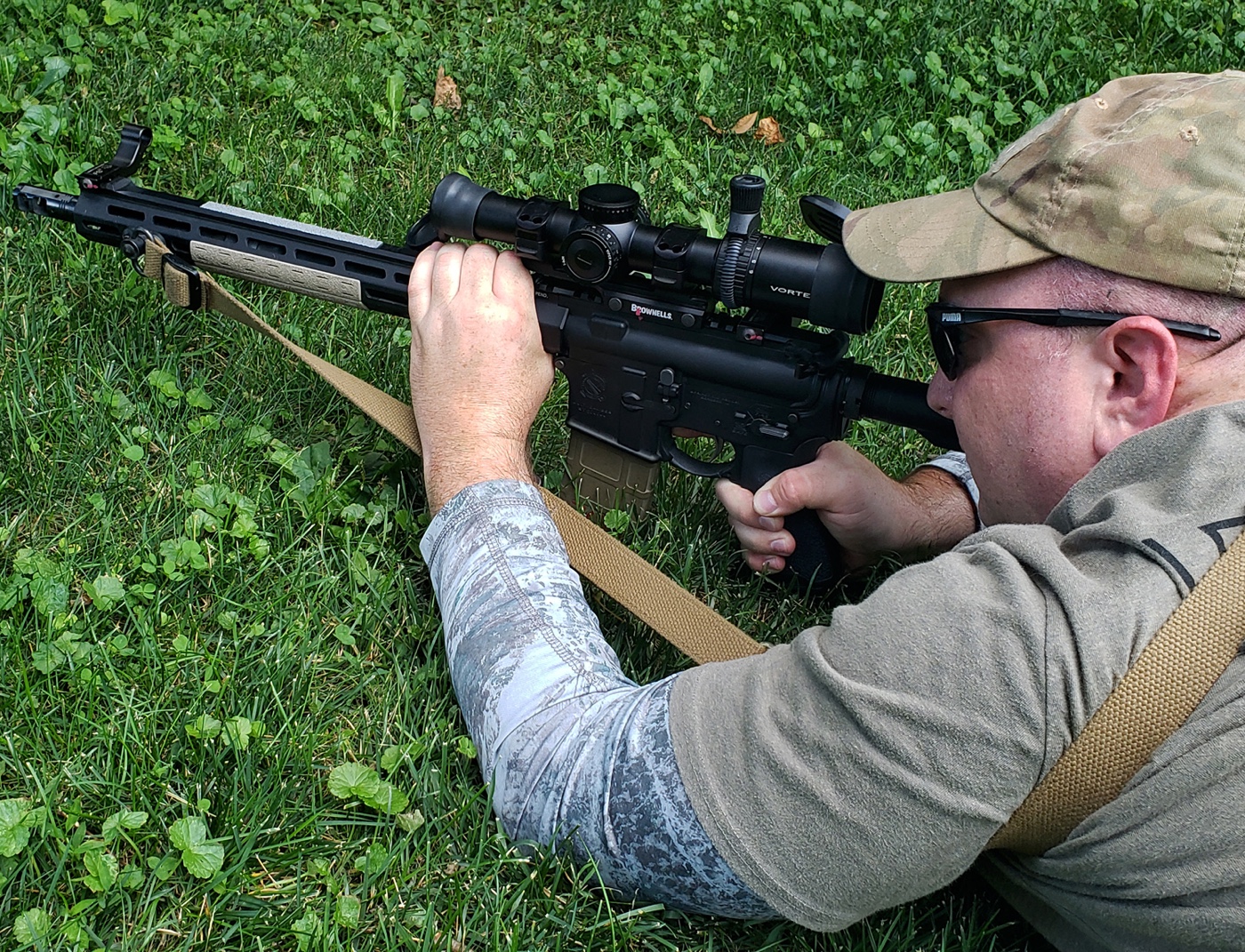
Sling Storage
When not actively using the sling, I can stow it on the rifle to keep it from snagging on everything. Here are two ways to stow the sling that still keeps it rapidly deployable.
Method #1: Loosen the sling and guide it around the stock so there’s a loop that should extend far enough to catch the bottom of the pistol grip. Now, cinch the sling down by the adjustment slider, and, voila! That will keep the sling in place, and when I need to deploy it, I just pull the adjustment slider to let the sling drop down.
Method #2: This method requires a thick rubber band around the stock. Similar to Method #1, I’ll loosen and guide the sling around the stock except I’ll keep the loop inline with the buffer tube. Next, I’ll fold the loop over itself and pull the Ranger band over the sling, then cinch the sling down to keep it all in place. To deploy the sling, I basically grab and yank.
Both methods have their merits, and the rifle can still be operated with the sling stowed using either technique.
Closing Thoughts
The above techniques are not the end all be all. However, I believe they’ll give you a good baseline to build off of and figure out what works for you. It takes time and practice to become proficient with the sling and maintain that proficiency, but being comfortable with using the sling in uncomfortable situations can offer a considerable advantage.
Editor’s Note: Please be sure to check out The Armory Life Forum, where you can comment about our daily articles, as well as just talk guns and gear. Click the “Go To Forum Thread” link below to jump in and discuss this article and much more!
Join the Discussion
Featured in this article
Continue Reading
Did you enjoy this article?

 84
84




